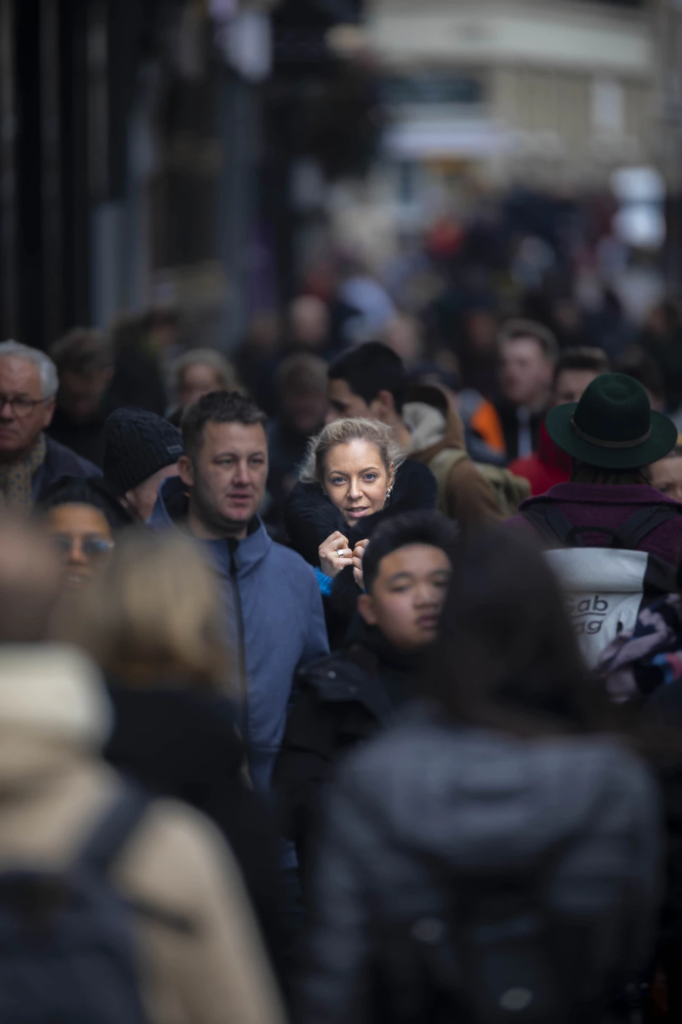
We’re coming up on a holiday weekend, the kind of holiday that finds many of us at parades, at the beach, at fireworks displays, in crowds of all sorts. Settings like that can be exhilarating and fun, as you get swept up in the excitement and wonder of the folks around you. They can be stressful and anxiety-provoking, because you don’t like people and being hemmed in by all that activity and noise. In the current climate, they can also be confusing and scary, when violence occurs or a riot begins for whatever reason. Whatever kind of crowd might be around you, it’s important to know how to move through one. You might need to get across to the other side for a shop or to meet up with a friend. You might be heading in the same or opposite direction, but need to get where you’re going quickly. You might be in the middle and want to escape before you have a panic attack or get carried along into a stampede. It would be easy to tell you to just do it, just walk to your goal, but there are some tips and tricks to be more efficient and effective.
The key to moving within and through crowds is being able to predict the movement of other individuals. Next time you’re in one, even if you can go along with the flow that time, pay attention to the people around you. Over time, you will learn what kinds of speeds you can expect, and what kinds of direction changes. Don’t try to proactively categorize types so much as get a sense for spotting slower and faster subgroups, and ones that drift with the folks around them or who stop and become islands that others break around. Think about the patterns of how people actually move when you observe them more than the stereotypes you might connect with how you think they will move. If you turn the exercise into a constant background game, you will begin to more easily see the natural eddies and flows of even the most tightly-packed mass of people. You’ll also become practiced at predicting when small gaps will open and close as each person moves at their own pace with their tiny variations in trajectory. Doing it now, when it’s less important for you to navigate that crowd with urgency, will make it easier later.
When you can predict where the elements of a crowd will be in the coming seconds, you can hopscotch your way through those little islands of space in order to jump ahead of where you were. Instead of moving lockstep with the people next to you right now, you can slide into the openings that appear in front of you like jumping on a series of rocks to cross a stream. Because the crowd is moving all around you, you can’t look for where to go, then go there. You have to figure out where there will be somewhere to go, and get there when it becomes available. It will require you to be actively engaged in scanning the folks around you, working on that prediction skill, and being willing to change speed and direction rapidly to take advantage of the gaps that will open and close for brief periods of time. The idea is to arrive in that space at the moment it appears, so think about how you would intercept another person walking towards you and intercept the space you’re aiming towards instead. It won’t be perfect because people can do weird things, especially if you’re in the sort of undirected crowd that is full of folks on cell phones or staring at what’s happening around them, but the more you do it, the better you’ll be.
Going diagonal along the general direction of the crowd will usually be more successful than trying to go straight across, forward, or back. Similarly, getting to the edges will usually allow you to find more openings than in the middle. You might have to be flexible and work towards intermediary goals as you work your way towards your final destination. When I have to get from one side of a pedestrian-packed street to another, for instance, I might dive in to the crowd before it meets up with where I want to go and let it carry me forward as I pick my way across instead of trying to get straight to the other side. It will give me more options to pick openings that bias towards the side I’m going, and not limit me only to the ones ahead of me. It will also be easier for me to predict their downstream movement and not get dragged along if I’m part of it rather than stopping, standing still, and darting perpendicular to the crowd’s direction. If I end up beyond where I want to be, it might even be a good idea for me to get to one side first, then go in the complete opposite direction of everybody else, jumping upstream like a salmon instead of playing dodge-humans like I’m in the middle of a bizarre pinball machine. Again, experiment when it’s not vital, and see what works best with the ways you are able to pace and shift your own movement.
It’s not hard to learn how to slip through a crowd, but it is a skill. Mastering it will make crowds less stressful because you’ll know you can’t get trapped by them. It will make life less frustrating because you can get to where you’re going quickly if you like, no matter how many people are in your way. And it will make you safer because you’ll be able to escape them at will when they would otherwise put you in the path of danger or be dangerous themselves.




